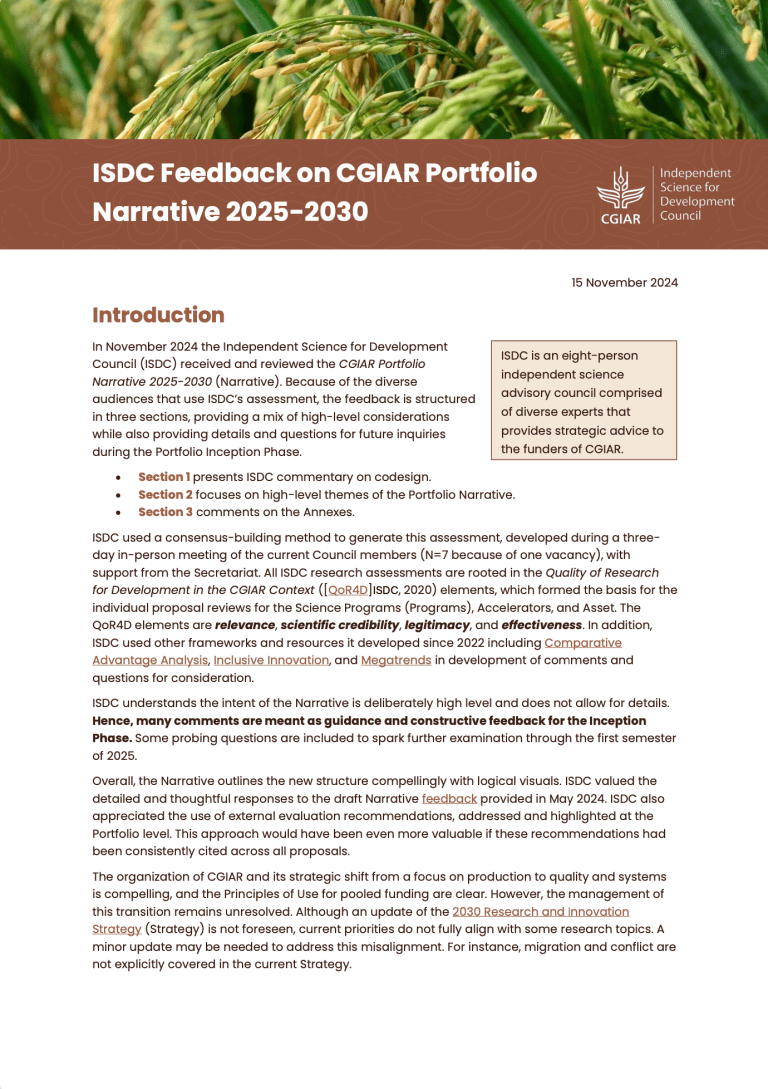This blog coincides with the launch of the ISDC 2020 foresight and trade-off project.
COVID-19 is not just a global pandemic. The virus is an urgent call to action for agrifood researchers to collaborate and work across disciplines and sectors to better understand, prevent, and cure zoonoses. And one opportunity to better prepare is to include foresight and trade-off analyses in strategic planning.
Many wish they had a crystal ball to see into the future, especially CGIAR as the organization transforms to One CGIAR and develops its 2030 Research Strategy during a time of scarce resources. In science, we have foresight and trade-off analyses. But the best these methods can do is project, not predict. Like extreme weather events or conflict, pandemics are described as shocks within foresight megatrend scenarios. However, recent reviews commissioned by the Independent Science for Development Council (ISDC) revealed that shocks are missing in the foresight agrifood literature.
The lack of shocks in the agrifood megatrend scenarios reviewed may be a surprise considering zoonoses have plagued the world for centuries and are more common than many perceive. According to the International Livestock Research Institute, a new zoonosis on average surfaces every four months. Livestock is an important protein and income source. Yet, the increase in livestock as a food source has the potential risk of rising zoonoses and other possible trade-offs.
The significance of foresight and trade-offs in strategic planning is why ISDC embarked on developing reflections and recommendations for the One CGIAR reform. The suite of publications includes the commissioned foresight and trade-off reports, a synthesis technical note, and a fact sheet outlining trade-off recommendations for One CGIAR.
We invite you to learn about the project and discover what are other foresight agrifood research gaps, relevant trade-off cases studies, current trade-off data and modeling tools from farm to global scales, drivers of future agrifood systems, future technology, and most relevant, the ISDC reflections and recommendations stemming from this work.



